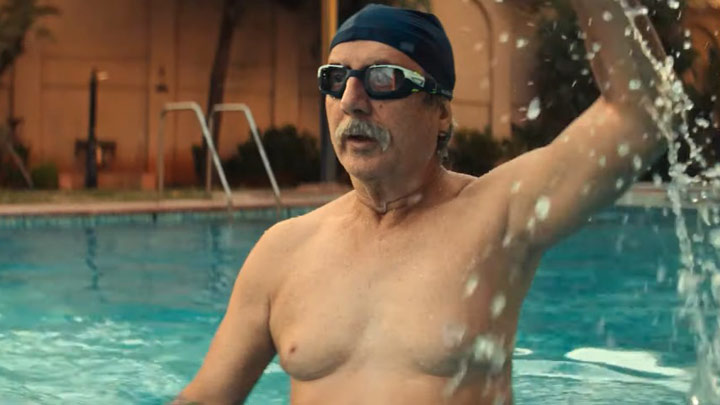ZeroZero Robotics’ HOVERAir X1 Pro and X1 ProMax are set to become the standard in prosumer camera drones. Both models pack a truly impressive list of features into a small package that starts at less than $500.
It was just a year ago that we reviewed ZeroZero’s HOVERAir X1, which was known as the Hover Camera X1 at the time.
Among its other clever features, that compact drone can be folded like a clamshell for easier toting-around between flights, plus it can take off from (and land on) the user’s outstretched hand, thanks to a protective cage around its four propellers.
The drone also keeps its user centered in the shot via facial and body recognition algorithms, and it can be set to several different autonomous flight modes using nothing but a pushbutton control on the drone itself.
Those modes include Hover (in which it hovers in place, panning back and forth with the user as they move from side to side); Follow (flies along behind the moving user, keeping them in the shot); Zoom Out (starts close to the user, then flies back to a wider shot); Orbit (flies in a circle around the user, keeping them centered at all times); and Bird’s Eye (looks straight down on the user from above).
HOVERAir
There’s an iOS/Android app for real-time remote control, adjusting settings and reviewing footage, but the aircraft can be used completely on its own, without a smartphone anywhere in sight.
The original base-model X1 still is available for US$349, and it’s a good choice for getting some neat shots on a budget, but the X1 Pro and X1 ProMax mark a huge leap forward in both aeronautical and photographic performance. We’ll start out by taking a peek at the X1 Pro, which is optimized for shooting snow sports and cycling.

HOVERAir
Whereas the base X1’s gimbal-stabilized camera tops out at a maximum resolution of 2.7K/30fps, the Pro bumps that up to 4K/60fps – it shoots slow-motion footage at 1080p/120fps.
The Pro is also a much speedier flyer than its 25-km/h (16-mph) predecessor, able to go up to 42 km/h (26 mph) while following moving subjects. It can even manage short bursts at 60 km/h (37 mph) to keep up with fast-accelerating targets.
Battery life, while still not up there with the 30-minute runtime of larger drones, jumps from the base model’s 12 minutes up to a significantly better 16 minutes. This improvement comes thanks to a higher-capacity 1,920-mAh lithium battery, which can be hot-swapped with a second battery as needed.

HOVERAir
Wi-Fi range is additionally much longer, now allowing users to manually pilot the drone and check the view from its camera up to a maximum distance of 500 m (1,640 ft). By contrast, the original X1 is limited to a range of 50 m (164 ft).
Importantly, the Pro is capable of flying over water and snow, and in the dark. The base X1 can’t manage any of those conditions in autonomous flight, as its secondary downward-facing camera needs to see daylight-illuminated ground in order to gauge the drone’s speed and altitude.
The Pro also sports a rear collision detection and avoidance system, to keep it from backing into obstacles. We’re told that because it tracks its user’s trajectory, it should just follow their already-clear path when flying forward behind them.

HOVERAir
Intended for professional use, the X1 ProMax shares many of the Pro’s features, but increases video resolution to 8K/30fps (although there’s still a less memory-hungry 4K/60fps, and 4K/120fps slow-mo).
Other upgrades include vision-based rear collision detection – as opposed to the Pro’s proximity-sensor-based-system – and 64 GB of internal memory as opposed to the Pro’s 32 GB. Both models support SD cards of up to 1 TB for additional storage.
They’re also both a bit bigger than the base model, measuring 173×149×39 mm when unfolded, and tipping the scales at around 192 g (6.8 oz). The original X1 comes in at 125 g (4.4 oz).

HOVERAir
Should you be interested, the HOVERAir X1 Pro and X1 ProMax are both the subject of an Indiegogo campaign. Assuming everything works out, a pledge of US$399 will get you the former, while $599 will get you the latter. The planned retail prices are $499 and $699, respectively.
There’s also an optional Beacon device (retail $129) that allows the user to view the drone’s shot via an OLED screen, control it via buttons or voice commands, and boost its communications range to 1 km (0.6 miles). Either a one-handed or two-handed joystick controller can be attached to the Beacon for easier usage.
You can see the drones in action – and see footage shot by them – in the video below.
The world’s first pocket-sized 8K flying action cameras – HOVERAir X1 PRO and PROMAX







